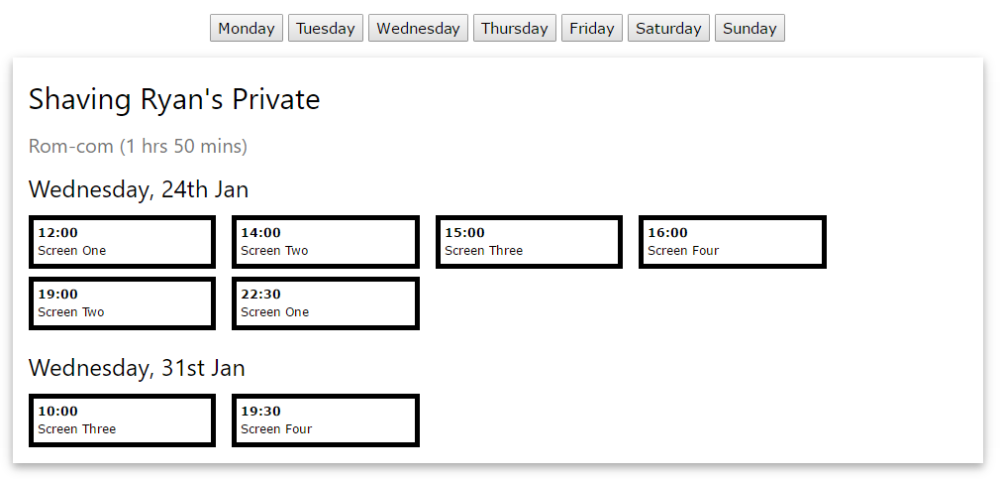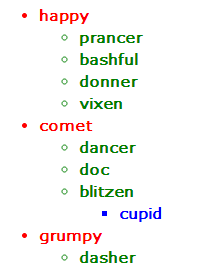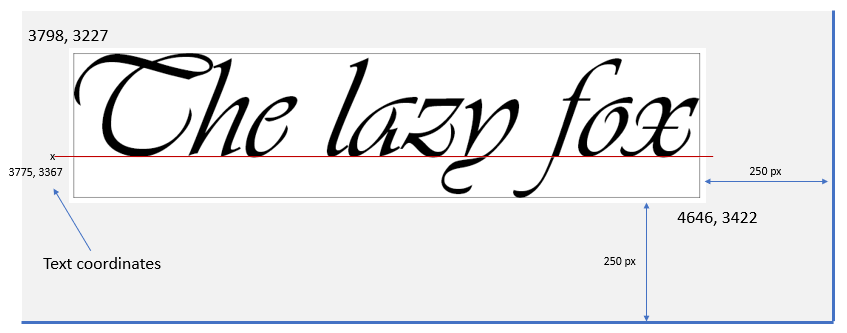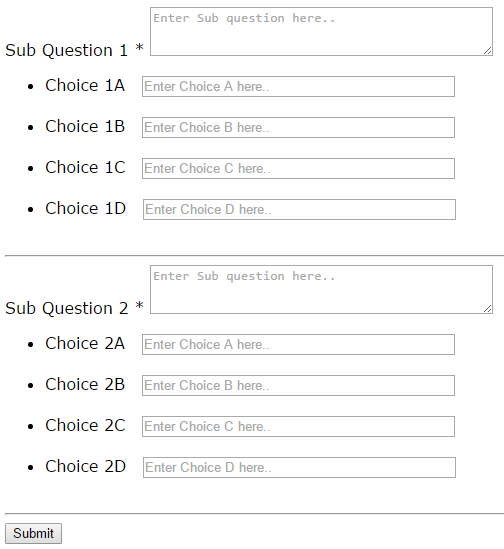Leaderboard
Popular Content
Showing content with the highest reputation since 09/23/2012 in Posts
-
Something like this? CODE <?php include 'db_inc.php'; // YOUR CONNECTION $pdo = pdoConnect('movies'); // CODE GOES HERE ################################################################################ ## PROCESS AJAX REQUESTS ################################################################################ if (isset($_GET['ajax'])) { $res = $pdo->prepare("SELECT m.id as movie_id , m.title , m.image , g.description as genre , CONCAT(m.running_time DIV 60, ' hrs ', m.running_time % 60, ' mins') as running_time , date_format(sg.screen_on, '%W, %D %b') as date , s.name as screen_num , TIME_FORMAT(sg.screen_at, '%H:%i') as start_time FROM screening sg JOIN screen s ON sg.screen_id = s.id JOIN movie m ON sg.movie_id = m.id JOIN genre g ON g.id = m.genre WHERE dayname(screen_on) = :day ORDER BY movie_id, screen_on, sg.screen_at "); $res->execute([ 'day' => $_GET['day'] ]); $data = []; # # Put data into an array with same structure a required output # - array of movies, each movie having arrays of screenings # foreach ($res as $r) { if (!isset($data[$r['movie_id']])) { $data[$r['movie_id']] = [ 'title' => $r['title'], 'image' => $r['image'], 'genre' => $r['genre'], 'runtime' => $r['running_time'], 'screenings' => [] ]; } $data[$r['movie_id']]['screenings'][$r['date']][] = ['start' => $r['start_time'], 'sno' => $r['screen_num'] ]; } exit(json_encode($data)); } ?> <!DOCTYPE html> <html lang="en"> <head> <meta name="generator" content="PhpED 12.0 (Build 12010, 64bit)"> <meta name="viewport" content="width=device-width, initial-scale=1.0"> <title>olumide</title> <link rel="stylesheet" href="https://www.w3schools.com/w3css/4/w3.css"> <link rel="stylesheet" href="https://cdnjs.cloudflare.com/ajax/libs/font-awesome/6.2.1/css/all.min.css"> <script src="https://code.jquery.com/jquery-3.6.0.min.js"></script> <script type='text/javascript'> function showScreenings(day) { $("#movie-listings").html("") $.get( "", {"ajax":1, "day":day}, function(resp) { $.each(resp, function(mid, mdata) { let title = `<h2>${mdata.title}</h2><h4 class='w3-text-gray'>${mdata.genre} (${mdata.runtime})</h4>` $("#movie-listings").append(title) $.each(mdata.screenings, function(dt, ddata) { let datesub = `<h3>${dt}</h3>` $("#movie-listings").append(datesub) $("#movie-listings").append("<div class='screenings'") $.each(ddata, function(k, sdata) { let scr = `<div class='screening'><b>${sdata.start}</b><br>${sdata.sno}</div>` $("#movie-listings").append(scr) }) $("#movie-listings").append("</div>") }) }) }, "JSON" ) } </script> <style type='text/css'> .days { padding: 16px; text-align: center; } .screening { width : 20%; display: inline-block; margin-right: 16px; margin-bottom: 8px; padding: 4px; border: 5px solid black; font-size: 9pt; } </style> </head> <body> <nav class="days"> <button onclick="showScreenings('Monday')">Monday</button> <button onclick="showScreenings('Tuesday')">Tuesday</button> <button onclick="showScreenings('Wednesday')">Wednesday</button> <button onclick="showScreenings('Thursday')">Thursday</button> <button onclick="showScreenings('Friday')">Friday</button> <button onclick="showScreenings('Saturday')">Saturday</button> <button onclick="showScreenings('Sunday')">Sunday</button> </nav> <div id='movie-listings'class='w3-content w3-padding w3-card-4'> <!-- LISTINGS GO HERE --> </div> </body> </html>3 points
-
I guess you don't understand that phpfreaks is a free site, with expert help provided by volunteers. Given the fact that everyone is donating their time and expertise to try and help people like yourself, the argument that you host a free site with source code you got from somewhere else for free, means you shouldn't ever have to learn anything (which can be learned in a few hours) will not get you much sympathy here.3 points
-
By far the best the best way is to fix whatever they are warning you about.3 points
-
@HawkeNN I want to clarify some things for you. Most code that was written for PHP 7.x will still run fine under php 8. For the most part PHP 8 added new features. There are "Breaking Changes" that were made, listed here: https://www.php.net/manual/en/migration80.incompatible.php but it is unlikely that is the problem with your code from some of the errors I saw listed. For example, the "headers already sent" error is a common one and has been around since php 3 at least. It has to do with code that sends output to the browser (as in the case of a script that intermixes HTML and php) and then tries to set HTTP header values. At that point, the HTTP request has already been sent with whatever headers it had, and it's too late to add or modify them. PHP session use is one function that sets header values because it sets a cookie. Some of the advice that you got is related to common techniques for trying to solve the issue. Equally important is your hosting configuration for PHP. Changes to the configuration of PHP from a version upgrade, can turn on settings that might have been off previously, or warnings being emitted that weren't before. This can then trigger output which also causes the "headers already sent" message. I suspect that this is part of your problem here, and really requires some debugging of your hosting setup. This was already brought up to you, in that there will be a php.ini (and often other assorted xyz.ini files that are included by the main php.ini) where settings can be made or changed to re-configure php. In conclusion, this is a PHP developer forum. From looking at this thread, you aren't likely to have a good outcome here, because you aren't a php developer. My sincere advice is to just find yourself a developer (this forum is chock full of them) you can pay a fee to, in order to resolve your issues and get your site working again. We have established that the code is bad, and that there is likely a few different things going on that are somewhere between the configuration of your server to possible improvements to the code you have. In other words, this is a problem for an experienced developer that requires debugging. I probably shouldn't say this, but my knee jerk reaction is that getting your code to work is not that big of a job, but looking at a thread like this is frustrating to read, because in my experience it is not going anywhere. There isn't any long term value to it for our forum, and you are not going to become an active member of the forum, nor learn PHP development, so there is nothing in it for us, or the community at large.3 points
-
With a couple of db tables like this Table: user Table: role +---------+----------+--------+ +---------+---------------+-----------+------------+ | user_id | username | points | | role_id | role_name | point_min | points_max | +---------+----------+--------+ +---------+---------------+-----------+------------+ | 1 | John | 66 | | 5 | - | 0 | 100 | | 2 | Paul | 101 | | 6 | Contributor | 101 | 1000 | | 3 | George | 3000 | | 7 | Author | 1001 | 10000 | | 4 | Ringo | 200000 | | 8 | Editor | 10001 | 100000 | +---------+----------+--------+ | 9 | Administrator | 100001 | 999999999 | +---------+---------------+-----------+------------+ Then a simple query SELECT username , rolename FROM user u JOIN role r ON u.points BETWEEN r.points_min AND r.points_max; does the job for you +----------+---------------+ | username | rolename | +----------+---------------+ | John | - | | Paul | Contributor | | George | Author | | Ringo | Administrator | +----------+---------------+3 points
-
Use DATE type columns for your dates, not varchar. Have your leaving dates either a valid date or NULL. SELECT eemp_id , fname , lname , AVG(timestampdiff(MONTH, joining_date, coalesce(leaving_date, curdate()))) as av_mths FROM employee_details ed JOIN employee e ON e.empid = ed.eemp_id GROUP BY eemp_id HAVING av_mths >= 36;3 points
-
If you are outputting an image from a DB blob field, then here's an example... // EMULATE DATA FROM THE DATABASE $type = 'image/png'; $comments = 'Lorem ipsum dolor sit amet, consectetuer adipiscing elit. Maecenas porttitor congue massa. Fusce posuere, magna sed pulvinar ultricies, purus lectus malesuada libero, sit amet commodo magna eros quis urna.'; $image_data = file_get_contents('images/snowman.PNG'); // OUTPUT THE DATA echo "<div style='width:396;'> <img src='data:{$type};base64," . base64_encode( $image_data ) . "' width='394' height='393'> <p>$comments</p> "; RESULT3 points
-
Don't use "SELECT * ". Specify the columns you want. This makes it easier for others, like me, to understand what is in the table and what the query is doing. Indent your code to show the nested structure of loops etc. If you had done those I might have given this problem more than a cursory glance. So you'll have to settle for a generic example of using a recursive function to give an indented list of parent/child elements. Also, Don't run queries inside loops. Use JOINs to get all the data in a single query THE DATA TABLE: category +----+---------+--------+ | id | name | parent | +----+---------+--------+ | 1 | happy | 0 | | 2 | comet | 0 | | 3 | grumpy | 0 | | 4 | prancer | 1 | | 5 | bashful | 1 | | 6 | dancer | 2 | | 7 | doc | 2 | | 8 | blitzen | 2 | | 9 | dasher | 3 | | 10 | donner | 1 | | 11 | vixen | 1 | | 12 | cupid | 8 | +----+---------+--------+ THE OUTPUT THE CODE <?php $sql = "SELECT id, name, parent FROM category"; $res = $db->query($sql); // // store arrays of items for each parent in an array // while (list($id, $name, $parent) = $res->fetch(PDO::FETCH_NUM)) { $data[$parent][] = array('id'=>$id, 'name'=>$name); } /** * recursive function to print a category then its child categories * * @param array $arr category data * @param int $parent parent category * @param int $level hierarchy level */ function displayHierarchy(&$arr, $parent, $level=0) { if (isset($arr[$parent])) { echo "<ul>\n"; foreach($arr[$parent] as $rec) { echo "<li class='li$level'>{$rec['name']}\n"; if (isset($arr[$rec['id']])) displayHierarchy($arr, $rec['id'], $level+1); echo "</li>\n"; } echo "</ul>\n"; } } ?> <!DOCTYPE html> <html> <head> <meta http-equiv="Content-Type" content="text/html; charset=utf-8"> <title>Example</title> <link rel="stylesheet" href="https://www.w3schools.com/w3css/4/w3.css"> <script src="https://ajax.googleapis.com/ajax/libs/jquery/3.3.1/jquery.min.js"></script> <script type="text/javascript"> </script> <style type="text/css"> body { font-family: verdana,sans-serif; font-size: 11pt; padding: 50px; } li { font-weight: 600;} .li0 { color: red; } .li1 { color: green; } .li2 { color: blue; } </style> </head> <body> <?php displayHierarchy($data, 0); ?> </body> </html>3 points
-
Too many people are obsessed with "filtering" bad inputs. You don't have to "filter" anything. You don't have to remove HTML tags. You don't have to remove SQL keywords. You don't have to strip quotes or backslashes. All you have to do is make sure that whatever the user typed doesn't screw around with what you're trying to do. Want to put it into HTML? Make sure it doesn't screw around with your HTML. Want to put it into SQL? Make sure it doesn't screw around with your SQL. Want to send it in JSON? Make sure it doesn't screw around with your JSON. And every single one of those situations has a simple, single best-practice solution: HTML? Use htmlspecialchars with ENT_QUOTES* and the correct charset. SQL? Use prepared statements. JSON? Use json_encode. That's it. No filter_vars or filter_inputs, no strip_tags, no regular expressions, nothing stupid like that. User wants to look cool and type <script> tags into their forum post? Go ahead and let them, because it'll just show up as plain and simple text. Like it just did now. * Only actually required if you are putting the input into an single quote-delimited tag attribute. Using double quotes for your attributes? Not outputting into an HTML tag? Then you don't technically need ENT_QUOTES.3 points
-
3 points
-
People still use StackOverflow? That's only half a joke. Their community has always been toxic to newcomers and there's so much emphasis on correctness that anything less than perfect is unacceptable. And there's the hostility towards any form of discussion about what is right that I always mention when this subject comes up. SO is good when you're looking for a precise answer to a specific question, but it's terrible for actually asking the questions, or trying to weigh in as a new person with different answers. But I am glad they dethroned Expert Sex Change in search results. edit: If Your Common Sense/shrapnelcol came across this thread and decided they wanted to join our forum...3 points
-
A few notes about text bounding boxes which, I hope, will help in precise placement of your text. Suppose I have the text string "The lazy fox" which I want to display using 150pt Vivaldi . My image is 4896 x 3672 and I want the text placed at the bottom right but 250 pixels from the edges of the image. $box = imagettfbbox(150,0,'c:/windows/fonts/vivaldii.ttf','The lazy fox'); gives this array of coordinates of the four corners $box = Array ( [0] => 23 [1] => 55 [2] => 871 [3] => 55 [4] => 871 [5] => -140 [6] => 23 [7] => -140 ) You may wonder why it can't just give a rectangle from (0,0) to (width, height) to make sizing simple, but there is extra information to be extracted from the array Text width = (871 - 23) = 848 Text height = 55 - (-140) = 195 The baseline will be 140px from the top The text is offset 23 px to the right. My text, therefore, will be in a rectangle 848 x 195 positioned 250 px from right and bottom edges. The top left x coord of the rectangle will be (4896 - 250 - 848) = 3798 and top left y coord will be (3672 - 250 - 195) = 3227. However, to land the text precisely into this area we position it on the baseline and at the required x offset, ie (3798 - 23 , 3227 + 140) = (3775, 3367). I use a simple custom function to assist with this process function metrics($font, $fsize, $str) { $box = imagettfbbox($fsize, 0, $font, $str); $ht = abs($box[5] - $box[1]); $wd = abs($box[4] - $box[0]); $base = -$box[5]; $tx = -$box[0]; return [ 'width' => $wd, 'height' => $ht, 'ascent' => $base, 'offsetx' => $tx ]; } $box = metrics ('c:/windows/fonts/vivaldii.ttf', 150, 'The lazy fox'); $box = Array ( [width] => 848 [height] => 195 [ascent] => 140 [offsetx] => -23 )3 points
-
Don't use $GLOBALS. Forget it exists. There is never a good reason to use it. Pretend you never saw it.3 points
-
+----------------+ +----------------+ | Make sure to |---+ +------->| (e.g. Courier) | +----------------+ | | +----------------+ | | | | +----------+ | | +->| use a |---+ | | +----------------+ +----------+ | | +------->| and use spaces | | | +----------------+ | +----------------+ | | +--->| monospace font |-----+ | +----------------+ | +----------+ | | not tabs |<----------+ +----------+ | +--------------------------------------------------------------------------+ | V +---------------+ | It also helps | +---------------+ | | | +-------------------+ +-------------------+ +------------------------>| if you sometimes |---------------------->| switch between | +-------------------+ +-------------------+ | | +-----------------+-----------------+ | | | | +-------------------+ +-------------------+ | overtype | | insert | +-------------------+ +-------------------+ | | | | | +----------+ | +----------=>| modes |<----------+ +----------+3 points
-
Highly recommend switching to a library like PHPMailer or SwiftMailer - they're both easier to use and more reliable than php's native mail function.2 points
-
Judicious application of array key names can greatly increase the efficiency and simplicity of your code. Consider this simplified version of the questions/options form code <form method='post' > <?php for ($qno=1; $qno<=2; $qno++) { echo <<<HTML <label> Sub Question $qno <span class="req">*</span> <textarea cols="46" rows="3" name="Q[$qno][question]" placeholder="Enter Sub question here.."></textarea> </label> <ul> HTML; for ($opt='A'; $opt<='D'; $opt++) { echo <<<HTML <li>Choice $qno$opt (text) <input type='text' name="Q[$qno][opts][$opt]" placeholder="Enter Choice A here.." size='40'> </li><br><br>\n HTML; } echo "</ul><hr>\n"; } ?> <input type='submit'> </form> producing... When the form is submitted, the POST array is like this... Array ( [Q] => Array ( [1] => Array ( [question] => aaaaaaaaaaaaaaaaaaaaaaaaaaa [opts] => Array ( [A] => aa [B] => bb [C] => cc [D] => dd ) ) [2] => Array ( [question] => bbbbbbbbbbbbbbbbbbbbbbbbb [opts] => Array ( [A] => ww [B] => xx [C] => yy [D] => zz ) ) ) ) Now you can easily iterate through the array to write the questions/options to you database foreach ( $_POST['Q'] as $qno => $qdata ) { write $qno and $qdata['question'] to question table save last insert id as $qid foreach ( $qdata['opts'] as $ono => $choice ) { write $qid, $ono, $choice to choice table } } Job Done.2 points
-
Unchecked checkboxes are not posted. I prefer to use a the null coalescing operator (??) when handling checkboxes EG $Bold = $_POST['Bold'] ?? 0; //if not set, default to '0'2 points
-
2 points
-
Sorry to see your valuable time was wasted by Barand providing you free professional consulting, custom built code and hand holding. 😣2 points
-
2 points
-
The radio buttons do not have to be visible, you can hide them and just have a label (which is your image) activate the associated radio. I put together an example. <input type="radio" name="color" value="black" id="black"> <label for="black"> <img src="black.png" alt="black"> </label> You can use CSS to display a border around whichever image is selected, and if you add a class to indication the current one, use a different border to indicate the current item. In my example above, the selected item has a white border, the current has a yellow border.2 points
-
don't bother with the mysqli extension. it is overly complicated, inconsistent, and in the case of procedural vs OOP statements, has different error responses for the same root problem. instead, use the much simpler, consistent, and more modern PDO extension. in php8+, both the mysqli and PDO extensions use exceptions for errors by default. the line of code that @Barand posted enables exceptions for errors for the msyqli extension. when you use exceptions for database statement errors, php will 'automatically' display or log the raw database errors, via an uncaught exception error. therefore, you can remove any existing error handling logic, since it won't ever get executed upon an error, simplifying the code. you should also name the connection variable as to the type of connection it contains, $mysqli/$pdo. this will let anyone looking at the code know what extension it is using, and also let you search for which code has been converted and which hasn't. you also need to use a prepared query when supplying external, unknown, dynamic values to a query when it gets executed, so that any sql special characters in a value cannot break the sql query syntax, which is how sql injection is accomplished. if you switch to the much simpler PDO extension, after you prepared the query, you can simply supply an array of the input values to the ->execute([...]) call.2 points
-
2 points
-
You won't learn anything useful about SQL pursuing this design because the design is fundamentally flawed and directly opposed what SQL is designed to do. My answer is that you don't. I'm sure there is a way for it to be done, but doing so would teach you nothing useful. The correct solution to your problem is to re-design your table structure, then use SQL as it's intended to be used rather than fight against it trying to make a poor design work. This shows yet another potential reason why your design is flawed. Why do you have multiple rows for the same link? If the answer is "To have more than 4 key words" then that's wrong. The multi-table solution gives you the ability to have an unlimited number of keywords per link.2 points
-
first of all you should use an unique index for email and I don't understand the also having for username (though that too). Though I now can see both...tired. Second take a look at this $sql = "SELECT * FROM register WHERE username:username AND email:email"; See anything missing? I give you a hint it's between username :username and also email :email. Here's a good link https://phpdelusions.net/pdo and I even still use it from time to time.2 points
-
So just to say it, the on event handler is accepting a callback function to run when there is a "play" event. A simpler solution would be to just have a function defined there, that the callback would run, or to define a function globally and pass the name of the function. However, @Kicken coded this function to return an anonymous function. It helps to focus in on return statements in code like this. If you notice the requestSent variable is declared outside the function declaration that does the work. This creates a "closure" (or takes advantage of javascript closure) depending on how you want to think about it. It makes the variable requestSent available to the inner function that is being returned, and this variable will continue to exist in the browser's memory associated with the window/page, until such a time as a new request is made that causes new html/javascript/css to be loaded. An alternative would be to declare requestSent globally and use that, but he gave you something more sophisticated -- a function that returns a function and takes advantage of a variable that is only visible to the anonymous function, and yet is available to the anonymous function across executions. Each time the callback is run, this could be either for the same song or a different song, so inside the function, there is a jQuery call to find the id of the button. let a_id = $(this).attr("id") It's good to think about why this is declared inside the function and how that works. Since this handler can be called for any song, the $(this) resolves in this situation as the song that is being played. Thus the a_id gets set each time there's a play event, and then gets the html id attribute. I added code to push the value onto the requestSent array, which again, since it's part of the closure for the anonymous function, survives across plays. I used Array.includes() to check if the song id already exists in requestSent. If not, I update requestSent with requestSent.push(a_id) and the ajax runs, passing a_id. The ajax is also being done using the jQuery library. The final question you should probably be asking is: if this is a function that returns a function, then how is it, that the callback, which requires a function to run, gets the actual function it needs. A function that returns a function is not a callback. The answer is that again Kicken used an IFFE here. What is actually being passed is a function that is immediately executed. You can see this because after the function definition function () { ... } It is immediately followed by the parens ie. () which causes javascript to execute the function. function () { ... }() So this code works because the function that returns a function, is run immediately, giving the callback parameter what it wants ... a function to run when a play event occurs. The function is anonymous and only bound to the event handler for play events, which also keeps global scope from being cluttered with a symbol table entry for a function that is only needed for the callback. The benefit of doing it this way is that he did not need to utilize a global variable, since closure takes care of this for you. This type of code is favored in many situations, since you don't have a slew of global variables floating around. Nothing outside the callback function can see or modify the requestSent array -- yet it is essentially a private environment that the callback uses. As I said previously -- advanced javascript stuff, that can be confusing if you are still learning javascript. Hope this helps -- using those terms (IFFE, javascript closure, js anonymous function, js callbacks, js this) will lead you to an enormous amount of additional material if you need to explore them further.2 points
-
FYI - ROLLUP is certainly available in version 5.7 mysql> SELECT VERSION(); +------------+ | VERSION() | +------------+ | 5.7.36-log | +------------+ mysql> SELECT classid as class -> , COUNT(*) as students -> FROM student_class -> WHERE semesterid = 12 -> GROUP BY classid WITH ROLLUP; +-------+----------+ | class | students | +-------+----------+ | 1 | 17 | | 2 | 18 | | 3 | 20 | | 4 | 23 | | 5 | 22 | | 6 | 27 | | 7 | 24 | | 8 | 20 | | 9 | 21 | | 10 | 27 | | 11 | 25 | | 13 | 5 | | 14 | 5 | | 16 | 3 | | 17 | 5 | | 19 | 17 | | NULL | 279 | <--- ROLLUP total +-------+----------+2 points
-
Keep track of whether or not you've sent the count request, and only send it if you haven't. $('audio').on("play", function(){ let requestSent = false return function(){ if (requestSent){ return; } requestSent = true; let a_id = $(this).attr("id"); $.ajax({ url: "count-play.php?id=" + a_id , success: function(result){ $("."+ a_id + "count").html(result); } }); }; }()); The first time the event fires, requestSent will be false so the ajax call will run and record the play event and requestSent will be set to true. Later events will see that requestSent is true and immediately return thus doing nothing.2 points
-
or... $res = $pdo->query("SELECT `option`, total FROM vote"); $data = $res->fetchAll(); $votes_cast = array_sum( array_column($data, 'total') ); foreach ($data as $r) { printf ("%s has %d votes (%0.1f %%)<br>", $r['option'], $r['total'], $r['total']*100/$votes_cast); }2 points
-
For anyone following... I did a screen-share with the OP. The problem was missing files and files in the wrong place. I did a clean install of Laragon and installed (Not upgraded) Mysql 8. All is working.2 points
-
Here's one way class PriceCalculator { private $start; private $end; private $price = [ 0 => [ 98, 128], 1 => [ 88, 118], 2 => [ 88, 118], 3 => [ 88, 118], 4 => [ 88, 118], 5 => [ 88, 118], 6 => [ 98, 128] ]; public function __construct ($time1, $time2) { $this->start = new DateTime($time1); $this->end = new DateTime($time2); } public function calculate() { $total = 0; $dp = new DatePeriod($this->start, new DateInterval('PT1M'), $this->end ); foreach ($dp as $min) { $day = $min->format('w'); $peak = '02' <= $min->format('H') && $min->format('H') < '18' ? 0 : 1; $total += $this->price[$day][$peak]/60; } return number_format($total, 2); } } $time1 = "2022-03-12 16:12:00"; $time2 = "2022-03-12 18:31:00"; $instance = new PriceCalculator($time1, $time2); echo $instance->calculate(); // 242.532 points
-
@gizmola and I both gave you code that you have not implemented. You should spend some time going through this PDO tutorial. Making a PDO connection is one of the simplest things you would ever need to do. https://phpdelusions.net/pdo This is all that is required to make a PDO connection. Anything you do beyond this, you should know exactly WHY you are doing more. $con = new PDO("mysql:host=localhost;dbname=test", 'root', '');2 points
-
Probably not what you really want, but it is what you asked for: $midPt = floor(strlen($content)/2); $file["content"] = substr($content, 0, $midPt) . $context['user']['id'] . substr($content, $midPt);2 points
-
Using a DB, I'd do it this way (tables used are from my SQL tutorial). Select a house name and the pupils menu lists pupils from that house. <?php const HOST = 'localhost'; const USERNAME = '????'; const PASSWORD = '????'; const DATABASE = 'jointute'; // default db $db = pdoConnect(); //============================================================================== // HANDLE AJAX CALLS // if (isset($_GET['ajax'])) { if ($_GET['ajax']=='pupilopts') { exit( json_encode(pupilOptions($db, $_GET['hid']))); } exit('INVALID REQUEST'); } //============================================================================== function houseOptions($db) { $opts = "<option value=''>- select house -</option>\n"; $res = $db->query("SELECT houseID , house_name FROM house ORDER BY house_name "); foreach ($res as $r) { $opts .= "<option value='{$r['houseID']}'>{$r['house_name']}</option>\n"; } return $opts; } function pupilOptions($db, $hid) { $opts = []; $res = $db->prepare("SELECT pupilID , CONCAT(lname, ', ', fname) as name FROM pupil WHERE houseID = ? ORDER BY lname, fname "); $res->execute([$hid]); $pups = $res->fetchAll(); $opts = array_column($pups, 'name', 'pupilID'); sort($opts); return $opts; } function pdoConnect($dbname=DATABASE) { $db = new PDO("mysql:host=".HOST.";dbname=$dbname;charset=utf8",USERNAME,PASSWORD); $db->setAttribute(PDO::ATTR_ERRMODE, PDO::ERRMODE_EXCEPTION); $db->setAttribute(PDO::ATTR_DEFAULT_FETCH_MODE, PDO::FETCH_ASSOC); $db->setAttribute(PDO::ATTR_EMULATE_PREPARES, false); return $db; } ?> <!DOCTYPE html> <html lang='en'> <head> <title>Example</title> <meta charset='utf-8'> <script type="text/javascript" src="https://code.jquery.com/jquery-3.3.1.min.js"></script> <script type='text/javascript'> $().ready( function() { $("#houses").change( function() { var hid = $(this).val() $.get( "", // specify processing file on server (in this case it's same file) {"ajax":"pupilopts", "hid":hid}, // data to send in request function(resp) { // handle the response $("#pupils").html("<option value=''> - select pupil -</option"); $.each(resp, function(k, v) { $("#pupils").append($("<option>", {"val":k, "text":v})) }) }, "JSON" // response type ) }) }) </script> <style type='text/css'> body { font-family: calibri, sans-serif; font-size: 12pt; } div { margin: 16px; padding: 8px; border: 1px solid gray; } label { display: inline-block; background-color: black; color: white; width: 120px; padding: 8px; margin: 1px 8px; } </style> </head> <body> <div> <label>House</label> <select id="houses" > <?= houseOptions($db) ?> </select> </div> <div> <label>Pupil</label> <select id="pupils" > <!-- pupil options --> </select> </div> </body> </html>2 points
-
Or avoid the concatenation which is usually the biggest source of error (and the query string needs an "=") echo "<a href='icerik.php?icerik={$goster['icerik_id']}'>{$goster['baslik']}</a>";2 points
-
This fails $j = "{'admin': 1, 'moderator': 1}" ; $a = json_decode($j, 1); echo '<pre> a ' . print_r($a, 1) . '</pre>'; This works $j = '{"admin": 1, "moderator": 1}' ; $b = json_decode($j, 1); echo '<pre> b ' . print_r($b, 1) . '</pre>'; Note the quotes in the JSON string.2 points
-
A more efficient way is to only select the 8 rows you're looking for instead of selecting the entire table.2 points
-
You've fixed things but you haven't fixed things. Like these: if(isset($_POST['d_name'])){ } if(isset($_POST['manner_death'])){ } if(isset($_POST['place_death'])){ } if(isset($_POST['nok'])){ } if(isset($_POST['rel_nok'])){ } if(isset($_POST['morgue_att'])){ } What are those doing? Nothing. They don't do anything. Then you have if(isset($_POST['tag_num'])){ if(isset($_POST['treatment'])) The first line makes sense, but the second? Without a pair of { } then it will only run the very first line of code that comes after: the assignment for $d_name. Then in your query, $query = "insert into data ( d_name, manner_death, place_death ,nok, rel_nok, morgue_att, tag_num, treatment) values ( '$d_name'.'$manner_death','$place_death','$nok','$rel_nok','$morgue_att','$tag_num','$treatment')"; you managed to fix the one syntax error but you created a new one. You cannot create websites by putting code in your editor and hoping everything will work. You have to make actual, conscious, deliberate decisions about the code. You have to know what different pieces of code mean. You have to understand why code is what it is and then how you can use it to accomplish what you want. So before you try to write more code, stop and take a few days to learn what you can about PHP. Then come back to this file and put some thought into each line of code in it.2 points
-
Here's my attempt DATA mysql> select * from ajoo -> order by user, recno; +-------+----------+---------+---------+ | recno | user | v_score | rollavg | +-------+----------+---------+---------+ | 6 | mina1111 | 4 | 3.2500 | | 7 | mina1111 | 3 | 3.2000 | | 8 | mina1111 | 2 | 3.2000 | | 9 | mina1111 | 4 | 3.4000 | | 10 | mina1111 | 5 | 3.6000 | | 11 | mina1111 | 0 | 2.8000 | | 12 | mina1111 | 1 | 2.5000 | | 13 | mina1111 | 1 | 1.7500 | | 14 | mina1111 | 1 | 0.7500 | | 1 | nina1234 | 3 | NULL | | 4 | nina1234 | 3 | 2.5000 | | 5 | nina1234 | 4 | 3.0000 | | 15 | nina1234 | 5 | NULL | | 17 | nina1234 | 2 | 2.0000 | | 22 | nina1234 | 2 | NULL | +-------+----------+---------+---------+ QUERIES -- -- create temp table a -- CREATE TEMPORARY TABLE temp_a SELECT a.recno , a.v_score , @count := CASE WHEN user = @prevu THEN @count+1 ELSE 1 END AS reccount , @prevu := user AS user FROM ajoo a JOIN (SELECT @count:=0, @prevu:=NULL) AS init ORDER BY user, recno ; -- -- create temp table b -- (copy of temp_a) -- CREATE TEMPORARY TABLE temp_b SELECT * FROM temp_a ; -- -- get results -- SELECT av.user , avg5 , tot3 FROM ( SELECT user , AVG(v_score) as avg5 FROM ( SELECT a.user , v_score FROM temp_a a JOIN ( SELECT user , COUNT(*) AS maxrec FROM ajoo GROUP BY user ) max ON a.user = max.user AND a.reccount > max.maxrec - 5 ) tots GROUP BY user ) av JOIN ( SELECT user , SUM(v_score) as tot3 FROM ( SELECT b.user , v_score FROM temp_b b JOIN ( SELECT user , COUNT(*) AS maxrec FROM ajoo GROUP BY user ) max ON b.user = max.user AND b.reccount > max.maxrec - 3 ) tots GROUP BY user ) tot USING (user) ; RESULTS +----------+--------+------+ | user | avg5 | tot3 | +----------+--------+------+ | mina1111 | 1.6000 | 3 | | nina1234 | 3.2000 | 9 | +----------+--------+------+2 points
-
Since you want to filter an array, I suggest array_filter() $times = [ '2021-06-02T19:40:00Z', '2021-06-03T02:10:00Z', '2021-06-03T01:10:00Z', '2021-06-02T23:05:00Z', '2021-06-02T23:05:00Z', '2021-06-02T23:07:00Z', '2021-06-02T23:20:00Z', '2021-06-02T18:20:00Z', '2021-06-03T00:10:00Z', '2021-06-03T00:40:00Z' ]; $d = new DateTime('23:59:59', new DateTimeZone('Z')); $newtimes = array_filter($times, function($v) use ($d) { return new DateTime($v) <= $d; });2 points
-
$this (programming pun intended) is the correct syntax, but produced a different error than the one you posted about the undefined variable. what was the error message in $this case? i'm going to guess that the database connection probably failed and there's no useful error handling in the code. while not the cause of the most immediate problem, your main code should be responsible for creating the database connection, then use dependency injection to supply that to any class that needs it. by making each class responsible for getting a specific database connection, your code is not general purpose. if the data source changes, to use an additional/different database type or using a remote api, you would need to go through and edit all the current code.2 points
-
1 and 2 would presumably be input from the web page. The rest would be something like: for ($m=1; $m<=$M; $m++) { for ($l=1; $l<=$L; $l++) { for ($j=1; $j<=$N; $j++) { #do calculation here storing it in a 2D array } # select minimum here (perhaps min() function) } } # use array sort # use PHP vector class # compute distance from vectors # echo results in desired format2 points
-
try $temp = []; foreach ($cars as $car) { $qty = intval($car); $key = trim(strstr($car, ','), ','); if (!isset($temp[$key])) $temp[$key] = 0; $temp[$key] += $qty; } foreach ($temp as $k => $t) { $newcars[] = "$t,$k"; }2 points
-
I created an extra table to define which category the values were in mysql> select * from catval; +-----+------+ | val | cat | +-----+------+ | 1 | 4 | | 2 | 4 | | 3 | 4 | | 4 | 4 | | 5 | 3 | | 6 | 3 | | 7 | 2 | | 8 | 2 | | 9 | 1 | | 10 | 1 | +-----+------+ then $sql = "SELECT a.cat as cata , b.cat as catb FROM datatb d JOIN catval a ON d.grpa = a.val JOIN catval b ON d.grpb = b.val "; $result = $db->query($sql); //categories $cat = [ 4 => ['name'=>'1:4', 'recs'=>[]], 3 => ['name'=>'5:6', 'recs'=>[]], 2 => ['name'=>'7:8', 'recs'=>[]], 1 => ['name'=>'9:10','recs'=>[]] ]; $n = 0; while ($row = $result->fetch_assoc()) { $cat[$row['cata']]['recs'][$n][] = $row['cata']; $cat[$row['catb']]['recs'][$n][] = $row['catb']; $n++; } // the output echo "<table border='1' style='width:500px; border-collapse:collapse;'>"; foreach ($cat as $c) { echo "<tr><th>{$c['name']}</th>"; for ($i=0; $i<$n; $i++) { echo '<td style="text-align:center;">' . (isset($c['recs'][$i]) ? join(',', $c['recs'][$i]) : '–') . "</td>"; } echo "</tr>\n"; } echo "</table>\n";2 points
-
Don't worry about the IBD file. MySQL knows how to manage itself, you don't need to go second guessing it because of what you think you saw in Notepad. The question you think you're asking is whether to use an UPDATE or a DELETE+INSERT, but the question you're actually asking is how you should manage uploaded files that can be replaced. The answer to that is... well, it depends. There are two basic options: 1. Forget the previously uploaded file. You don't care about it. Take the new file and stick it wherever you want, update the database, and delete the old file. Gotta delete. Because if you forget about the old file then there's not much of a point to keeping the file itself around too. 2. Keep track of the previous file. You'd probably want a table that holds all the information for past and future uploads, and that's where you track them. For using those files, instead of storing the file information in whatever place, you reference the file in your upload information table. New image, new information row, and you update whatever place was affected. This lets you keep a history of everything, which probably isn't important for stuff like user avatars but is frighteningly important for stuff like monetary transactions. "Okay, I've decided that I want to do <whichever option>. But what about my literal question? Should I update or delete and insert?" Time to learn about an important concept in computing that disappointingly few programmers ever end up learning: atomicity. That's the noun version of "atomic", which means (in this case) that whatever operation you need to do can't be interrupted or broken in half or appear to anyone else as being anything less than one single action. Atomicity is important for stuff like files and databases because you basically never want to look at a file or data in the middle of some important operation. Imagine your site is popular. Really popular. Facebook or Twitter popular. Constant traffic to your servers. Now imagine a user uploads a new image. When the code is ready, it needs to go off into the database to make whatever changes it needs to make so the user has the new image. Say you go with DELETE and INSERT. Your code runs one query that DELETEs whatever, then another query that INSERTs. Sounds fine. Except remember how your site is always busy? It's quite possible someone was looking at your site at the moment in between those two queries. Since the DELETE has happened but not yet the INSERT, your code isn't going to find whatever data it needed to find and the user is going to get a bad experience. If that user was a CEO for a huge company that wanted to buy you out for lots of money, they might not do that now. A DELETE and INSERT is not atomic because there was that point in between the two queries. It was not "one single action". Instead you go with UPDATE. The database does whatever it does, but the clever people who wrote the software for it already knew about stuff like atomicity. And they made their system guarantee that UPDATEs are atomic. One single action. If you do an UPDATE when that rich CEO looks at your site, the database has guaranteed to you that either (a) the CEO will see the old data because the update hasn't happened yet, or (b) they'll see the new data because the update has happened. There is no moment in between old and new for stuff to be broken.2 points
-
Defining a value in the parameter list makes that parameter optional. If it's not provided when the function is called, the it takes on the value assigned to it. Your specific example doesn't really make use of the feature effectively. Take something like this for example though: function findFiles($directory, $includeHidden = false){ $iter = new DirectoryIterator($directory); $list = []; foreach ($iter as $item){ if ($item->isFile()){ $isHidden = $item->getFilename()[0] === '.'; if ($includeHidden || !$isHidden){ $list[] = $item->getPathname(); } } } return $list; } That function requires at least one parameter when it's called, the directory to search. So you end up with the following options for calling it $files = findFiles('/home/kicken'); /* executes with $directory = '/home/kicken', $includeHidden = false */ $files = findFiles('/home/aoeex', true); /* executes with $directory = '/home/aoeex', $includeHidden = true */2 points
-
I just didn't see the table - the end of that first line was somewhere in my neighbour's living room.2 points
-
An alternative to the 2-table option is to treat costs as transactions, just like payments (cost amounts +ve, payment amounts -ve in this example)... DATA TABLE: payment +------+------+------------+--------------+---------+ | uid | name | trans_date | payment_type | payment | +------+------+------------+--------------+---------+ | 1 | kim | 2020-03-01 | cost | 100 | | 1 | kim | 2020-03-02 | card | -100 | | 2 | lee | 2020-03-01 | cost | 95 | | 2 | lee | 2020-03-02 | cash | -95 | | 3 | kent | 2020-03-01 | cost | 100 | | 3 | kent | 2020-03-03 | cash | -50 | | 3 | kent | 2020-03-04 | card | -50 | | 4 | iya | 2020-03-01 | cost | 80 | | 4 | iya | 2020-03-05 | cash | -40 | | 4 | iya | 2020-03-06 | card | -20 | +------+------+------------+--------------+---------+ then SELECT uid , name , date , cost , cash , card , total as balance FROM ( SELECT name , DATE_FORMAT(trans_date, '%b %D') as date , CASE payment_type WHEN 'cash' THEN -payment ELSE '-' END as cash , CASE payment_type WHEN 'card' THEN -payment ELSE '-' END as card , CASE payment_type WHEN 'cost' THEN payment ELSE '-' END as cost , @tot := CASE @previd WHEN uid THEN @tot+payment ELSE payment END as total , @previd := uid as uid FROM ( SELECT * FROM payment ORDER BY uid, trans_date ) sorted JOIN (SELECT @previd:=0, @tot:=0) initialize ) recs; +------+------+---------+------+------+------+---------+ | uid | name | date | cost | cash | card | balance | +------+------+---------+------+------+------+---------+ | 1 | kim | Mar 1st | 100 | - | - | 100 | | 1 | kim | Mar 2nd | - | - | 100 | 0 | | 2 | lee | Mar 1st | 95 | - | - | 95 | | 2 | lee | Mar 2nd | - | 95 | - | 0 | | 3 | kent | Mar 1st | 100 | - | - | 100 | | 3 | kent | Mar 3rd | - | 50 | - | 50 | | 3 | kent | Mar 4th | - | - | 50 | 0 | | 4 | iya | Mar 1st | 80 | - | - | 80 | | 4 | iya | Mar 5th | - | 40 | - | 40 | | 4 | iya | Mar 6th | - | - | 20 | 20 | +------+------+---------+------+------+------+---------+2 points
-
For example, https://www.php.net/manual/en/datetime.createfromformat.php https://www.php.net/manual/en/datetime.format.php2 points
-
Hi, This is a probably a wrong way of inserting new email into the DB and can result in race conditions. You should be inserting the new email directly into the DB and your column for ermail ids should be unique so that it throws an exception for duplicate entries.2 points
This leaderboard is set to New York/GMT-04:00

















